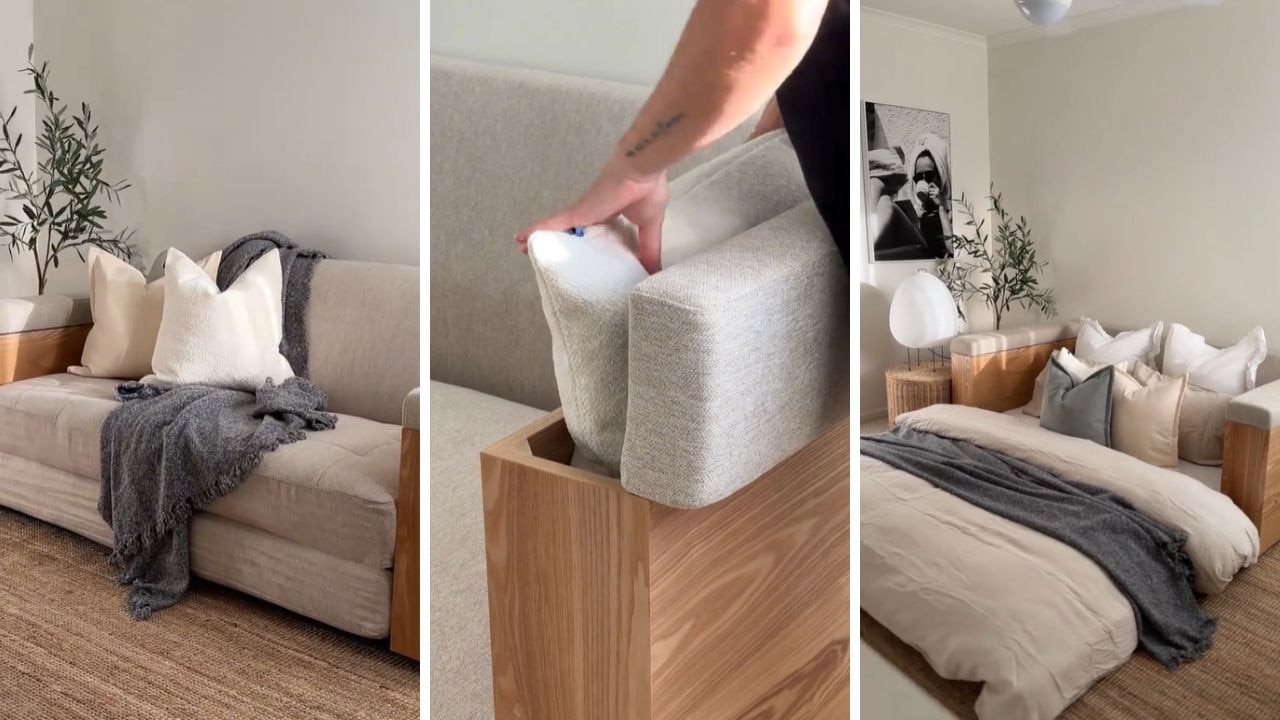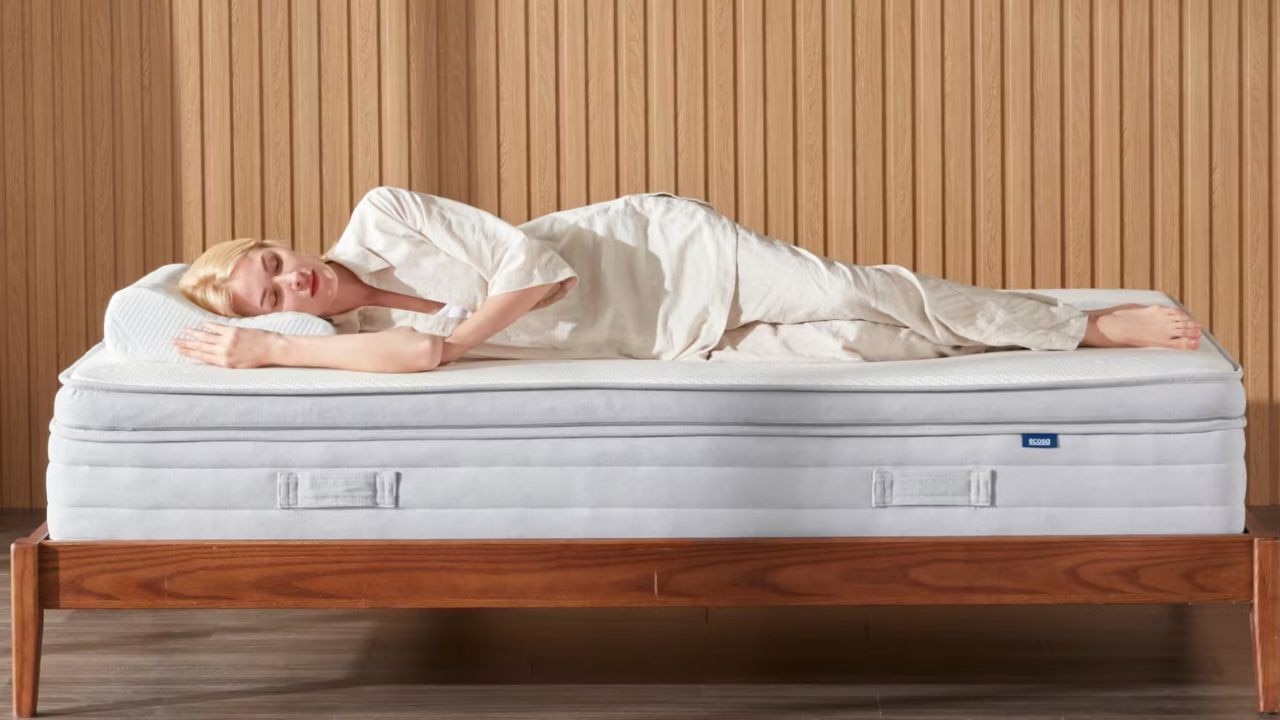Mattress Methodology Guide 2025: How to pick the best mattress
Mattress shopping can be a nightmare, but here are our top tips to help you choose the best bed for your body.

These products are hand-picked by our team to help make shopping easier. We may receive payments from third parties for sharing this content and when you purchase through links in this article. Product prices and offer details are not assured, and should be confirmed independently with the retailer. Learn more
Getting a good night’s sleep is often easier said than done. And while scented oils and white noise machines work for some, there’s no better way to catch those zzz’s than with a mattress that fits like a glove.
After all, with the average person apparently spending a third of their life in bed, it makes sense that our dreamy oasis away from the daily grind really does feel like cloud nine.
RELATED: Best mattresses to buy in Australia
Here’s an insight into the different considerations we take into account when researching, testing and reviewing mattresses.
Quick view
- Types of mattresses
- Mattress sizes
- Mattress in a box vs. traditional mattress
- How we test mattresses — parameters
- Sleeping position
- How long do mattresses last?
- Can you return mattresses?
Types of mattresses
There are so many mattresses, but so little time. Here are the main options you’ll see when mattress shopping. Mattresses can also be further divided based on material (such as bamboo and latex), coil type and more.
Foam mattress
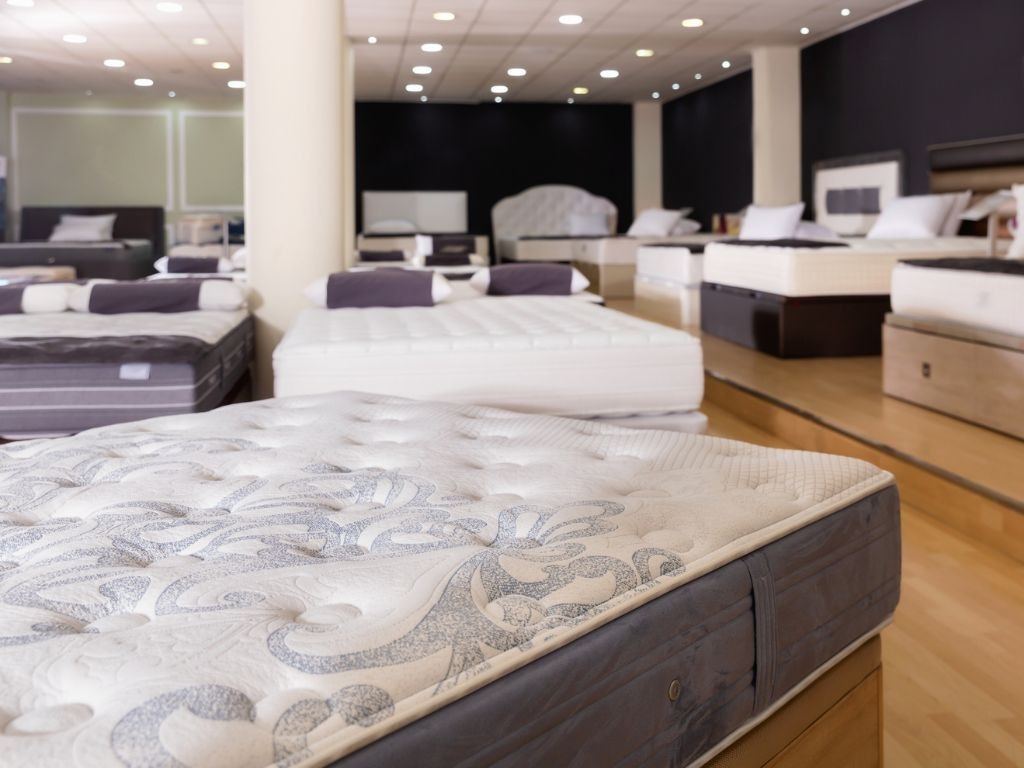
Foam mattresses are particularly ideal for people with joint pain and side sleepers who need more cushioning.
The memory foam mattress is one of the most popular types of foam mattresses out there and is a great option for side sleepers. It cradles the unique contours of your body and is usually a great choice if you’re looking for a mattress that can minimise motion transfer effectively.
The downside of a foam mattress generally is how it’s more likely to trap body heat compared to a spring mattress, and can create a sinking feeling if it’s too soft.
If you want to avoid getting stuck in a sort of ‘sinkhole’, certain options with a bouncier and a faster responding surface like a latex foam mattress would be a great alternative. A latex mattress also retains less heat, which is perfect for hot sleepers.
Spring mattress
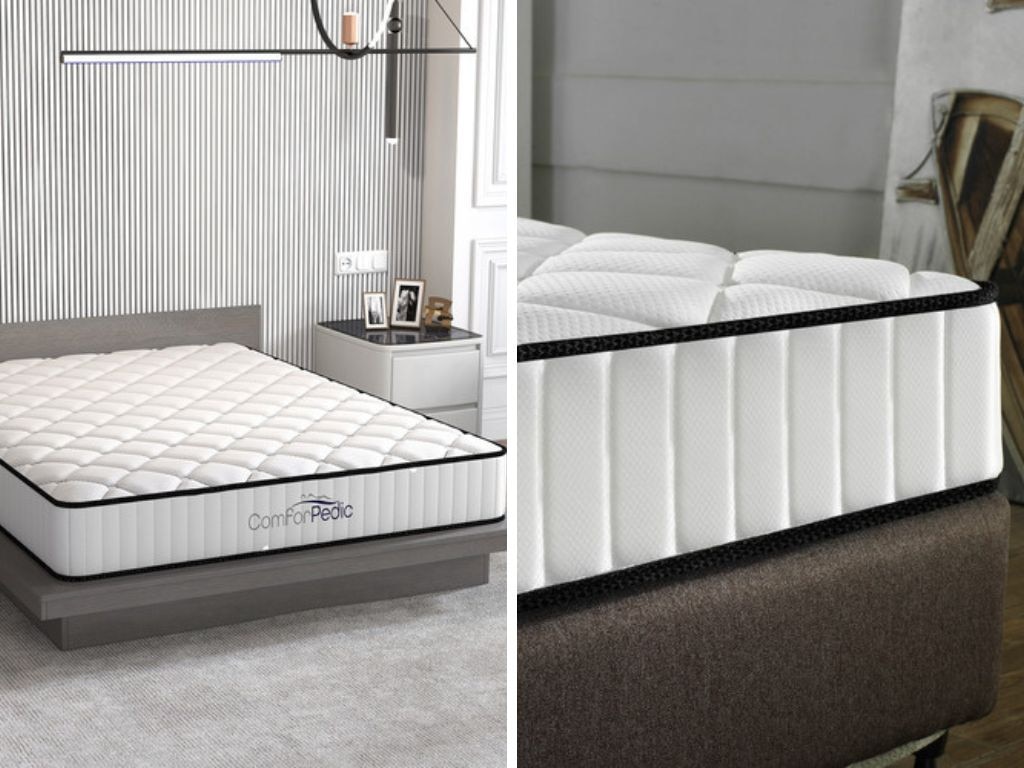
There are different types of spring mattresses, such as coil mattresses and those with pocket springs.
When buying a spring mattress, there are also various types of coils to consider, such as Bonnell coils (otherwise known as open coils) and continuous coils — each of which can make an impact on the support, durability and ability to minimise motion transfer.
In Australia, pocket spring mattresses are easier to find and are usually the type of spring component featured in hybrid mattresses. These can be great for pressure relief and ideal for those who want minimal motion transfer since each spring is individually encased within its own fabric pocket, so there’s not a ‘ripple effect’ (unlike traditional innerspring mattresses, which have a network of interconnected coils).
Hybrid mattress
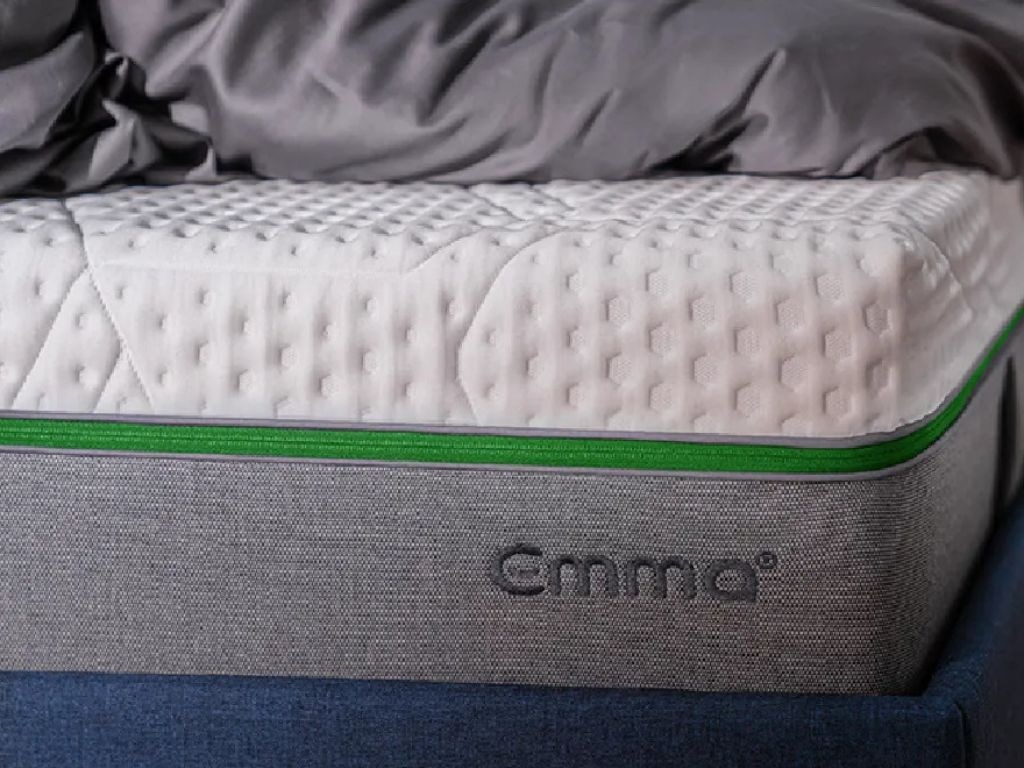
A hybrid mattress is basically a foam and spring mattress in one. Mattress brand Eva has broken down an average hybrid bed into several layers:
Base layer
The base layer is usually made from a dense foam for stability. Some mattresses also have an anti-slip bottom to prevent it from sliding around.
Primary support
This is where the springs and coils usually sit and are great for adding support, offering pressure relief, encouraging airflow and minimising that sinking feeling.
Foam layers
Hybrid mattresses will have multiple comfort layers made from different materials, each designed to provide a variety of benefits like cooling, support, pressure relief, cushioning and durability.
Pillow top
Some mattresses have a pillow top for extra cushioning.
Mattress sizes
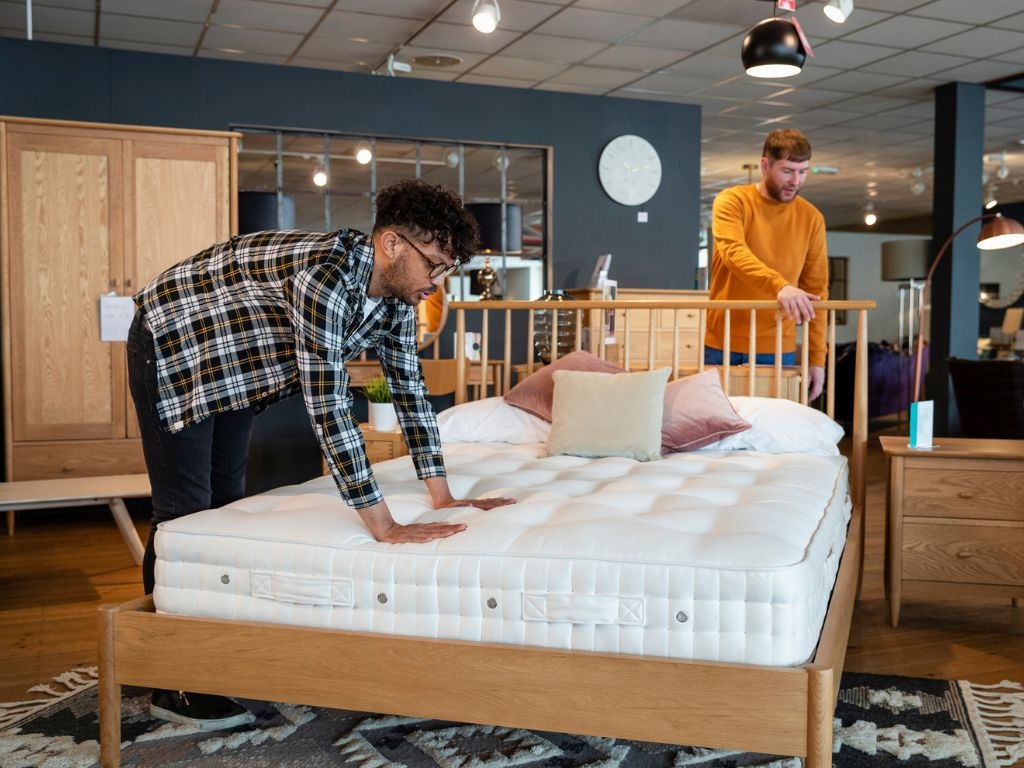
The mattress dimensions can vary between brands, particularly in terms of thickness. There are also some differences between Australian and European sizing, for example.
The length and width stays relatively the same across the board, but thickness can range between 14cm and 30cm. Thicker mattresses are generally ideal for people who need more support, such as those with a heavier build, while lower profile options are more suitable for children or people with mobility issues.
Below are the standard measurements for the length and width of mattresses in Australia:
• Single: 188cm x 91cm
• King single: 203cm x 107cm
• Long single: 203cm x 91cm
• Double: 188cm x 137cm
• Queen: 203cm x 153cm
• King: 203cm x 183cm
• Super king: 203cm x 203cm
Mattress in a box vs. traditional mattress
Boxed mattresses have been compressed and neatly packaged into an easily portable box (or two, if it comes with a separate comfort layer). They’re particularly convenient if you have lots of stairs or limited free space between the door and the bedroom. Traditional mattresses aren’t compressed and arrive already expanded, making them extra bulky.
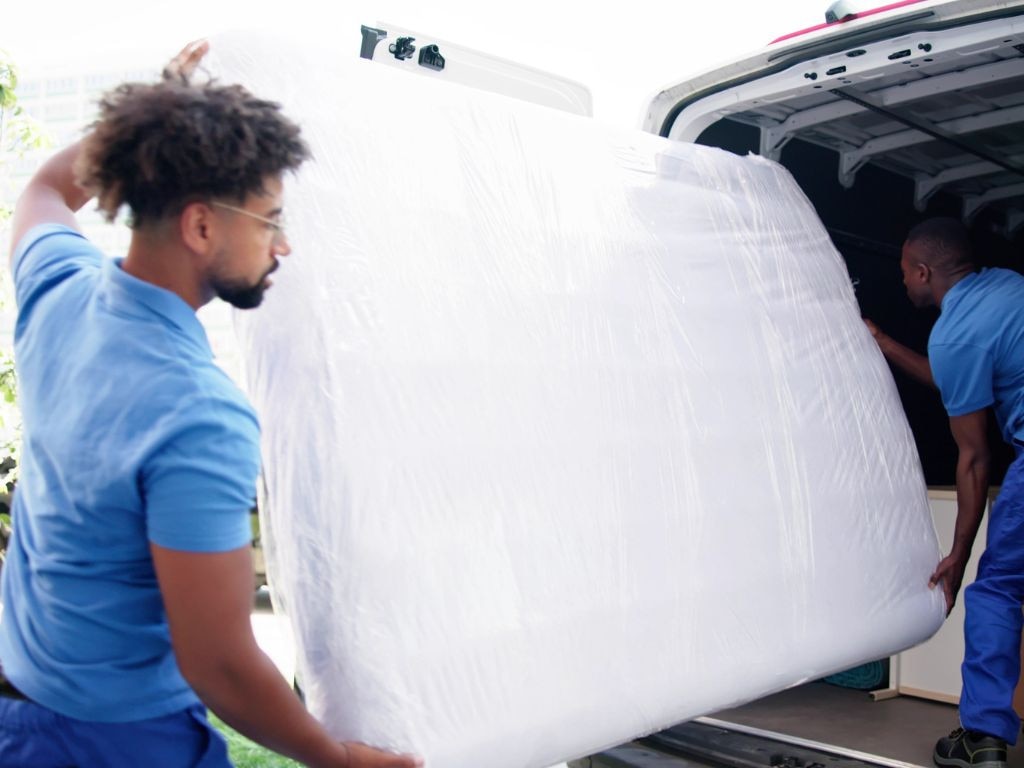
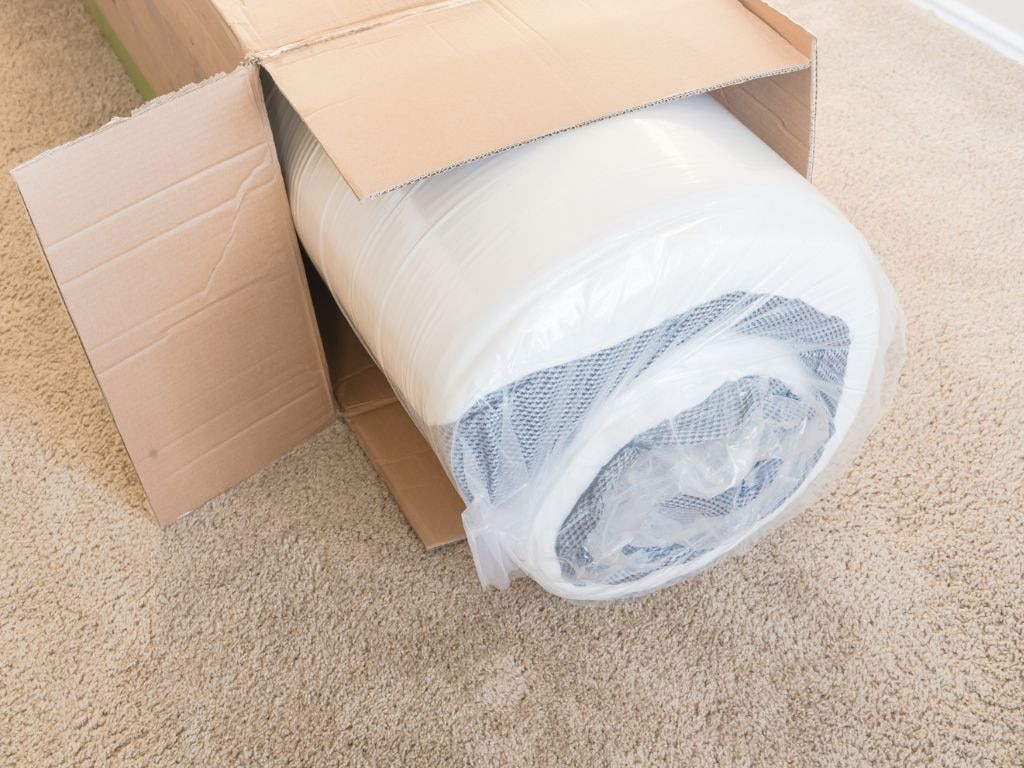
Both types of mattresses may produce a weird or ‘chemical-like’ smell once you take them out of the packaging, otherwise called off-gassing. This is usually stronger with boxed mattresses or synthetic foam mattresses. The odour usually disappears after a few days or potentially several weeks.
How to choose the right mattress — Parameters
To help you choose a mattress that’s right for you needs, here are several important factors we consider every time we test and review a mattress.
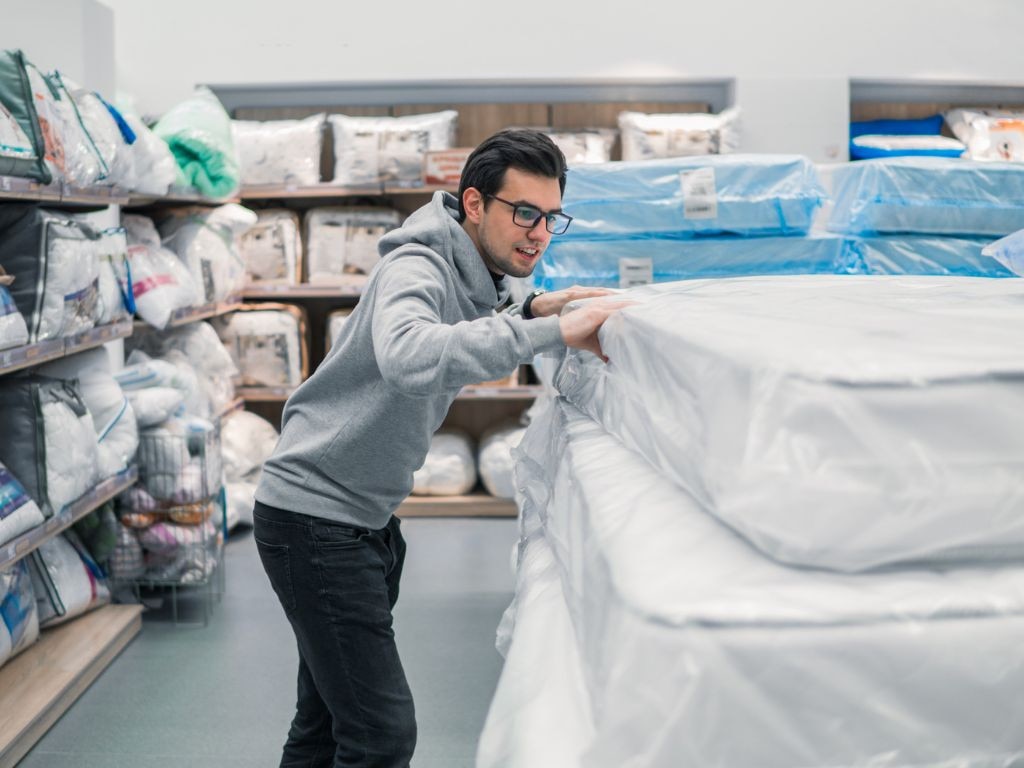
Delivery and customer service
More brands are now offering free delivery or next day delivery for mattresses, especially boxed mattress retailers. These are usually limited to metro areas, although there are some that extend the perk to customers with regional addresses.
When it comes to customer service, checking online reviews is the best way to see how well different companies work on a few important factors, including:
• Ease of returning or swapping a mattress
• Delivery timing
• How well or poorly the company responds to feedback and complaints
• How quickly the company can resolve issues.
Set up
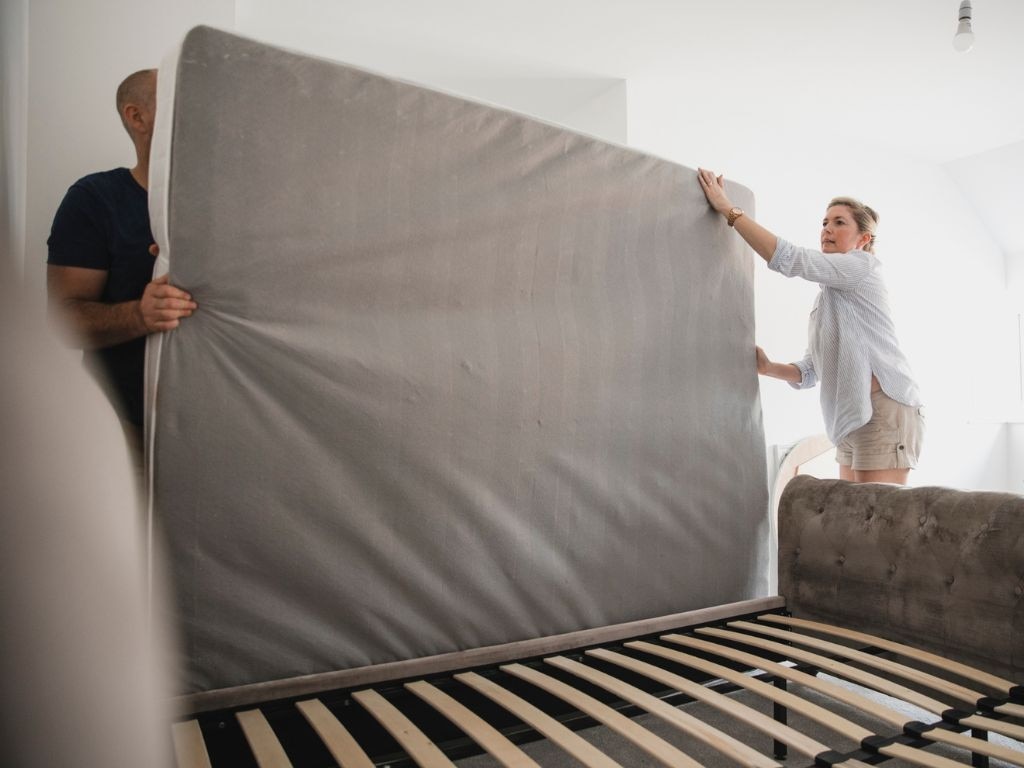
Boxed mattresses are easy to assemble since they can be unrolled onto the bed frame, before expanding to their full size which can take between 24 to 48 hours. While traditional mattresses arrive ready to use, it may be good to give them a day to breathe and settle after their big journey.
Some retailers offer white glove delivery, where they will deliver the new mattress as well as remove the old one. What’s included in the service varies between retailers and may require an additional cost.
Adjustment period
The adjustment period — i.e. how long it takes for your body to get used to the new mattress — can take days or weeks.
Mattress firmness levels
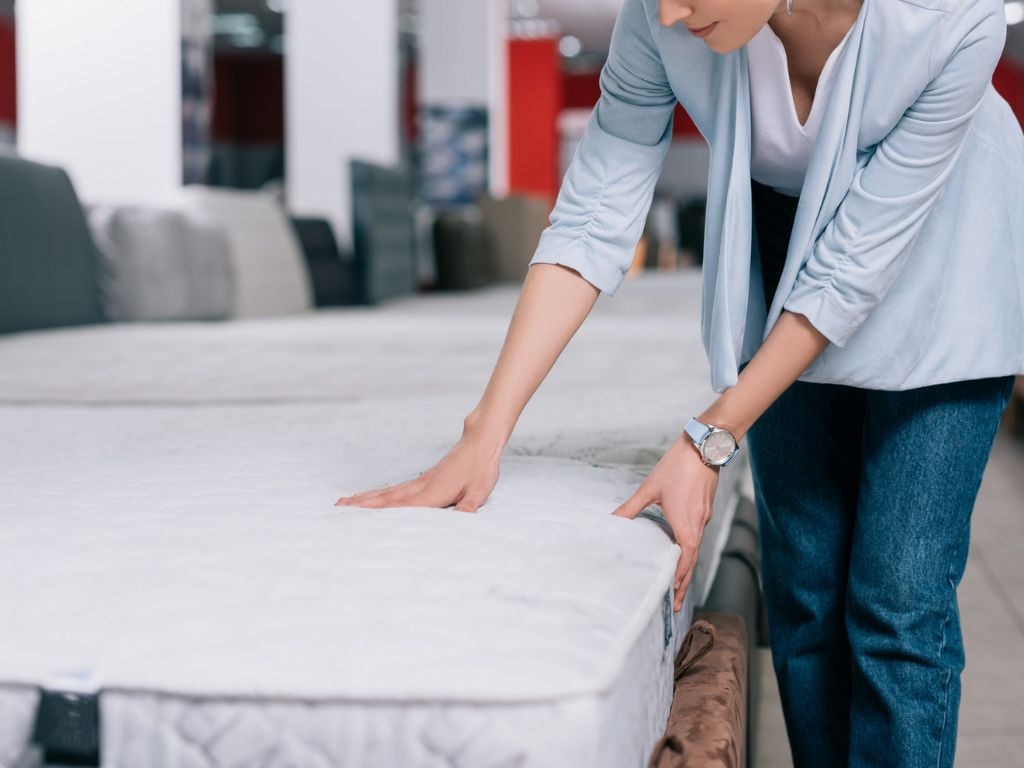
Every brand has their own firmness rating scale, ranging from one (extra soft) to 10 (extra firm). In cases where we rate the firmness level based on our own experiences and compare it with a brand’s rating, here’s a guide on what we mean.
Soft feel
• 1-2: The mattress is too soft and has too much sink and cushioning.
• 3-4: This is essentially a soft mattress. It has a plush and ‘cloud like feel’ but still gives some push back so you’re not completely enveloped by the bed.
Medium feel
• 5-7: The mattress has anywhere between a medium soft, medium or medium firm feel. While it feels a little harder, you can still expect a soft feel and some contouring as well as some push back and minimal sink.
Firm feel
• 8-9: This is equivalent to a firm or extra firm mattress. There’s minimal sinkage and contouring, and feels flat and ‘solid’ while still maintaining some cushioning.
• 10: The mattress has little cushioning and no contouring.
Mattress firmness and comfort
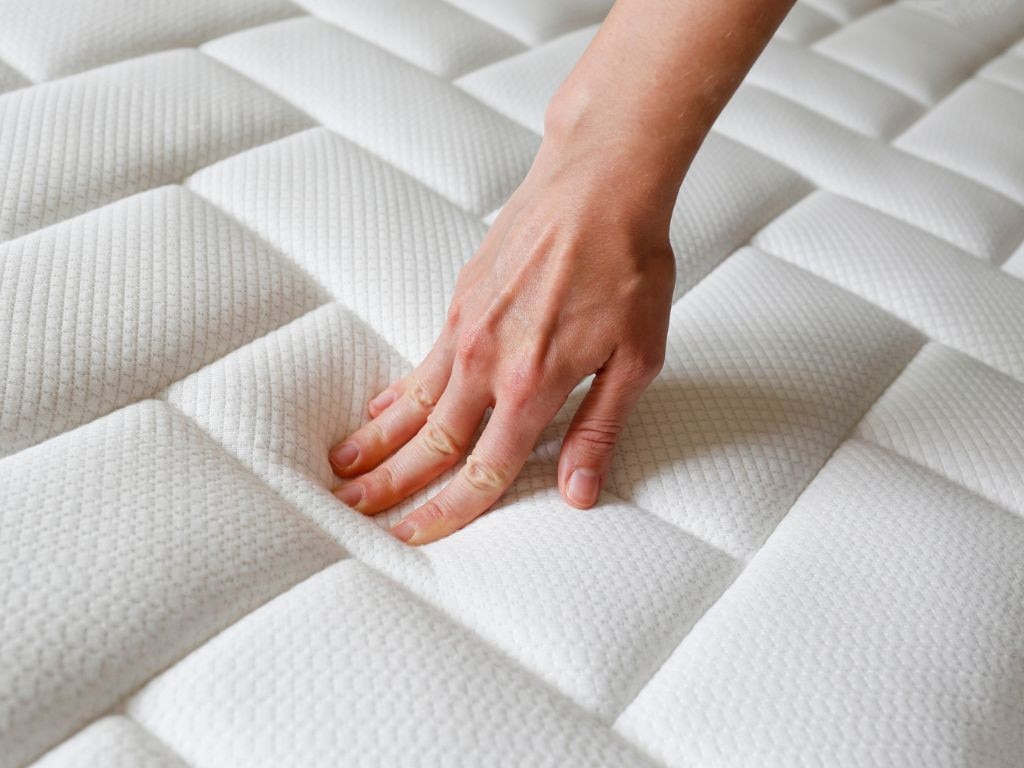
Mattress firmness is all about how your body feels once you hop into bed. Does your body immediately sink into the mattress and feel as if your curves are being hugged (i.e. soft)? Or does the surface feel as if the mattress is pushing your body up so you’re floating on top (i.e. firm)? Different brands have their own firmness scale, rating from 1 (extra soft or plush) to 10 (extra firm).
The right firmness level varies on a wide range of factors, including weight, age, sleeping position and certain physical conditions such as existing back pain, as well as personal preference. A medium firmness is generally seen as the sweet spot. More mattresses also now have adjustable firmness, which you can change it by either flipping the mattress over or by choosing a ‘split’ option where there are two firmness levels on the one side.
Weight, in particular, can have a major impact on how firm, supportive and overall comfortable the mattress will end up because it affects how much pressure you’re placing on the mattress. A lighter person will likely suit a soft mattress while a heavier sleeper may experience better pressure relief and support from a firm mattress.
Sagging
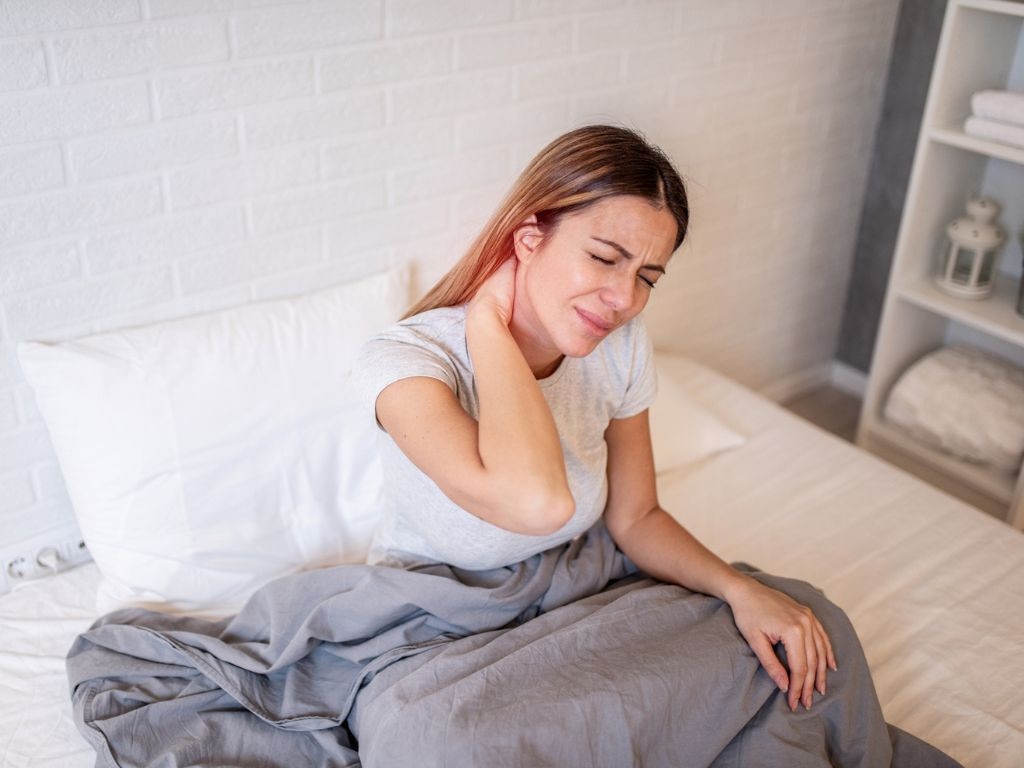
Natural wear and tear makes sagging inevitable after years of use, and should typically be more noticeable after the five-year mark. Keep in mind that it’s totally normal for the mattress to soften when you first start using it. The problem is when the mattress doesn’t ‘bounce’ back up and ends up leaving body impressions or dips, which can happen due to issues such as coils losing tension or the foam being too old.
Some to-do’s to add to your checklist:
• Pick a compatible bed base as well as a mattress that offers the support your body needs.
• Look for responsive materials, such as memory foam or latex, which help add bounce and distribute body weight evenly.
• Regularly rotate (not flip) your mattress every few months to avoid placing too much weight on the same parts of the bed.
Support
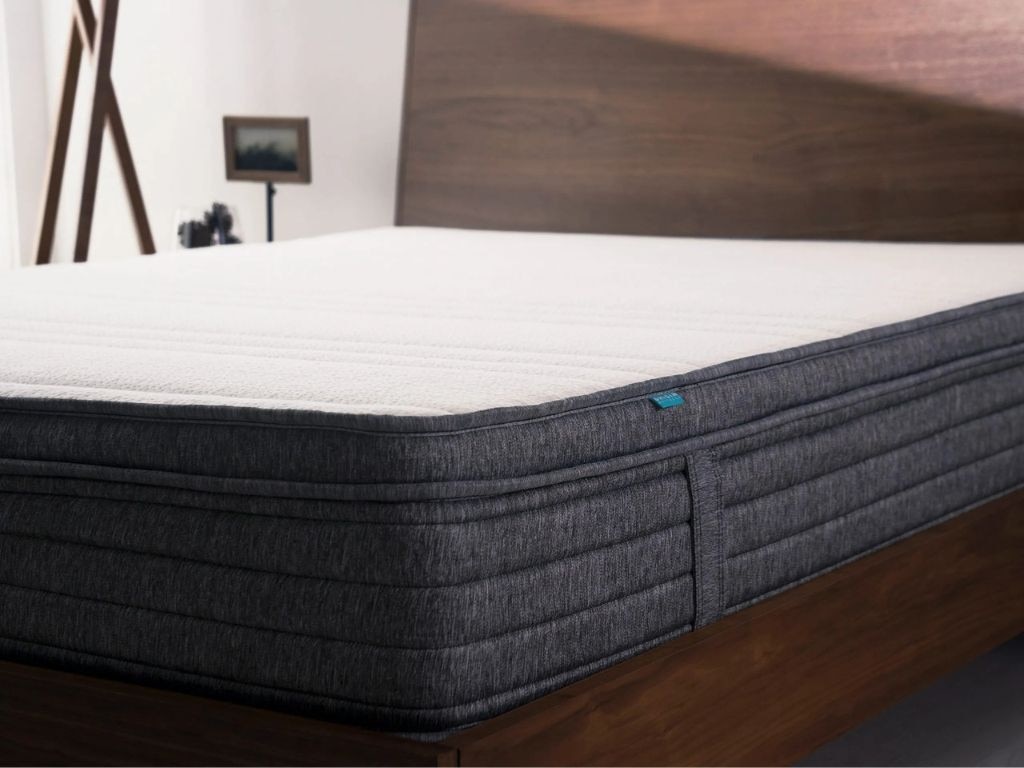
Finding a supportive mattress is really important for maintaining proper spinal alignment, which plays a big part in preventing back pain and, in-turn, sleep quality. It also helps distribute body weight evenly and reduces pressure points so your joints and muscles can truly relax. Plus, a good support system can improve durability and minimise sagging and early signs of wear.
Different aspects that impact support include the quality of materials, firmness level, edge support, motion isolation and overall construction.
Some factors to think about when checking the level of support include:
• Sleeping positions
• Body weight
• Existing health conditions
Medium soft to medium firm mattresses are typically seen as the go-to options, especially for those sharing a bed who have different preferences.
Edge support
Edge support refers to how sturdy the perimeter of mattress feels. Having good edge support prevents you from rolling off the bed and gives you maximum sleeping space since you’re not fighting for prime and centre. It’s also particularly important for anyone who need stability when sitting up or getting in and out of bed, such as the elderly and those with joint or mobility issues.
Temperature control
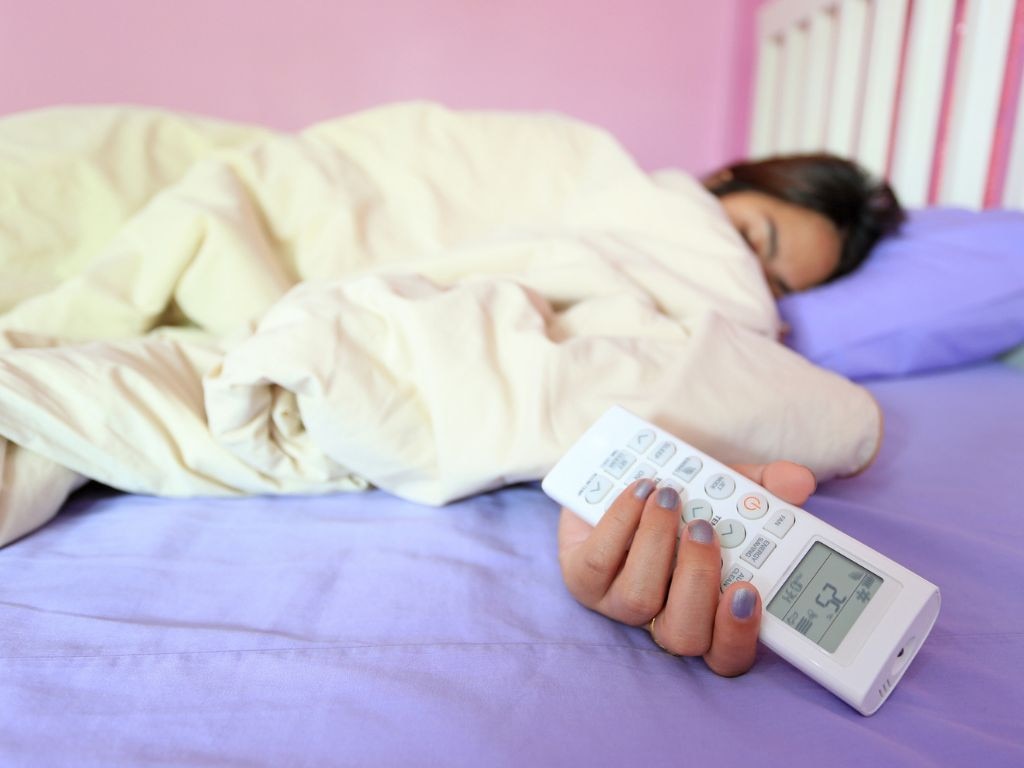
Temperature control is essentially how well the mattress regulates your sleeping temperature. This can vary depending on materials and construction.
In Australia, our weather usually leans towards the warmer side so it’s important to combat the heat by using a mattress with breathable materials that encourages airflow and wicks away heat.
Some things to think about include:
• Spring and hybrid mattresses tend to circulate airflow better than dense all foam mattresses.
• Latex mattresses don’t retain much heat and don’t hug your body as much as foam mattresses.
• Many hybrid mattresses have multiple layers and features that help circulate airflow throughout the mattress.
• Many mattresses now have different cooling technologies to encourage breathability and improve temperature regulation, such as cooling gel and copper-infused layers.
• Firmer mattresses with less contouring are ideal for hot sleepers since they trap less heat.
Motion isolation (partner disturbance)
The terms ‘motion isolation’ and ‘partner disturbance’ essentially refer to whether movement on one side of the mattress transfers to the other side.
If you’re getting woken up by your partner’s different schedule or constant tossing and turning, there’s a good chance your bad has poor motion isolation. In saying that, all mattresses are going to have some level of movement.
The downside of having a bed that absorbs movement well is that it can make it difficult for people with mobility issues to get in an out of bed, and uncomfortable for combination sleepers.
Types of sleepers
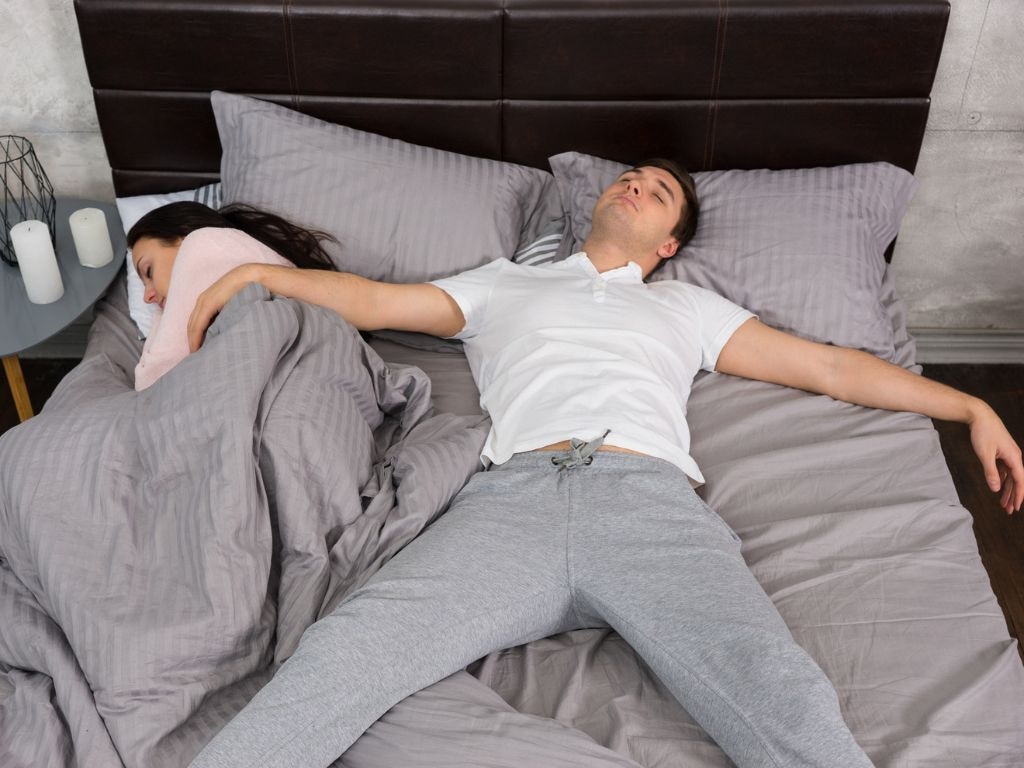
In addition to factors like weight and age, your sleeping position can play a part in how comfortable and supportive the mattress will be.
Side sleepers
Unlike back sleepers, side sleepers put pressure on their shoulders and hips so they need something a little softer for pressure relief.
Stomach sleepers
Sleeping on your belly can lead to back pain or neck pain because the midsection, which is where most of your body weight sits, can sink too deep into the mattress and cause a spine misalignment. A medium firm is a good starting point for stomach sleepers because it offers cushioning but isn’t so soft that it doesn’t provide enough support.
Back sleepers
A firm mattress, or a hybrid mattress with coils and foam, tends to be more suitable for back sleepers since soft beds may not provide enough spinal support.
How long do mattresses last?
Brands like Ecosa, Sealy and Koala say the lifespan of a mattress usually lasts around seven to 10 years before it needs to be replaced. Signs to look out for include sagging, lumpiness, bad sleep, more frequent back aches and allergies.
But while having a mattress last for a long time is great value for money, it’s also important to make sure it remain in good shape, is comfortable and supports you where you need it.
Can you return mattresses?
Mattresses generally can’t be returned in Australia, unless there’s a defect with the product. However, there are a growing number of brands that provide trial periods – typically around 100 nights – so you can get a better idea of whether or not the mattress is right for your body. Since it can take up to a month for you to adjust to a new mattress, some companies require you to have used the mattress for a certain number of days before requesting a refund.
Sign up to our free shopping newsletter to stay on top of the latest sale events and the top-rated products to buy.
More mattress coverage:




